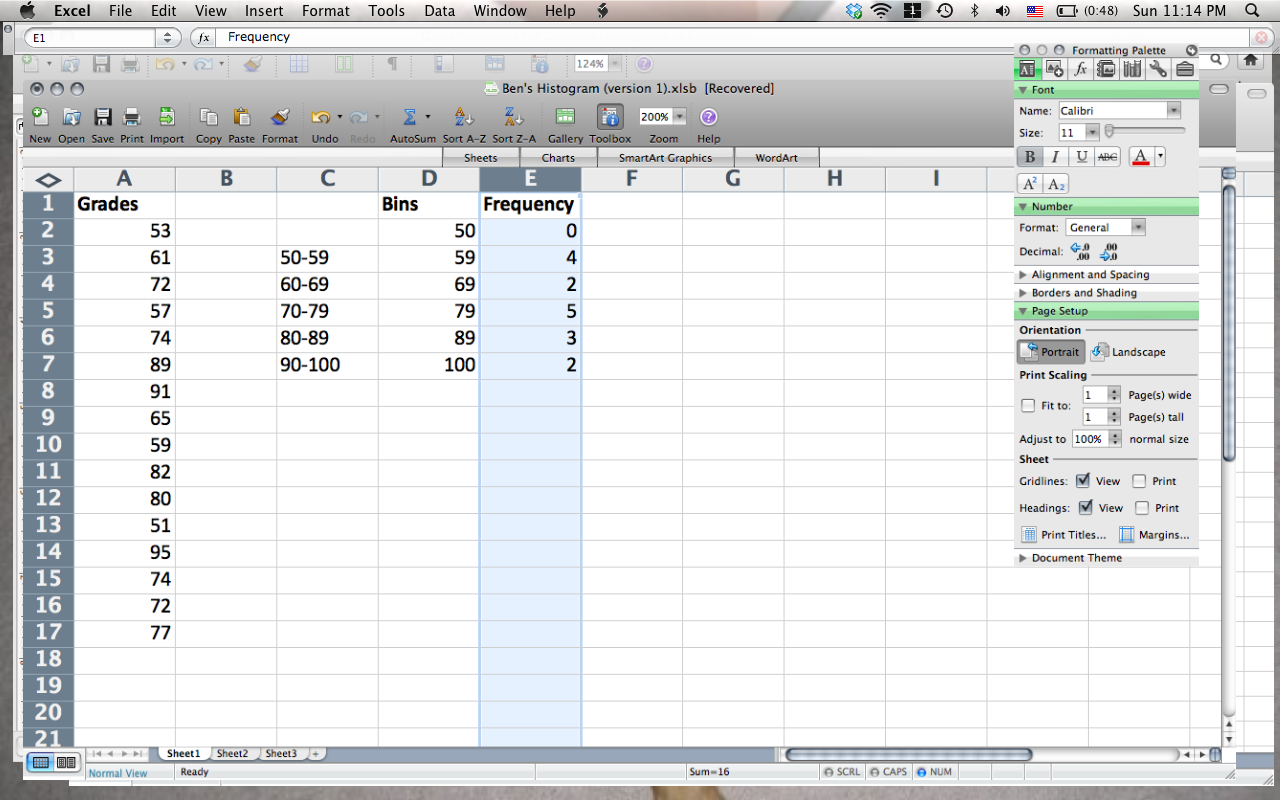


What is a bin in Excel?īins are the intervals by which your data will be grouped. The bins must be created in a separate column. We’ll place the list of bins in column B. Notice that the bins are set to intervals of 10, starting with the first bin of 50. This is usually the case to allow for consistency in representation. Bins should be listed in ascending order, and of course, the bin values should never overlap.Įxcel will automatically create a bin for values higher than the last specified bin, so we have specified 90 as our last bin. This will open up the Data Analysis window.Ĭlick the Data tab on the ribbon and choose the Data Analysis command.Now that all the prep work is done, Excel is ready to produce our histogram. Select the Histogram tool and click OK.Enter the Input Range as A2:A11, and the Bin Range as B2:B6.Under Output Options, select the Output Range radio button and enter the name of the cell where you’d like the histogram output table to be displayed.

This tells Excel to create a chart.Įxcel generates a histogram graph in the existing worksheet with the following features: A corresponding frequency distribution table in cells D2 to E8.The frequency of grouped values on the y (vertical) axis.
#Create a histogram in excel 2016 mac series#
An Excel-created series labeled ‘More’ for values greater than the final bin.#How to rotate a histogram in excel 2016 series# The histogram chart (that is, the graph) is linked to the distribution table, not to the original source data.
#Create a histogram in excel 2016 mac update#
Making changes to the original dataset will not automatically update the distribution table nor the chart. This is why it is considered a static chart. To change the values displayed on the x (horizontal) axis, adjust the values in column D.However, manually changing the table will update the histogram. For example, you can type >90 in cell D8. The histogram will now show “>90” as the last value on the X-axis. Method 2 - Using the Insert Chart menu optionīeginning with Excel 2016, you can create a histogram without having to use the Data Analysis Add-in, simply by inserting a histogram as you would any other chart. The built-in chart method has the advantage of being dynamic, meaning that changes made to the dataset will result in the immediate update of the chart. #How to rotate a histogram in excel 2016 update#


 0 kommentar(er)
0 kommentar(er)
